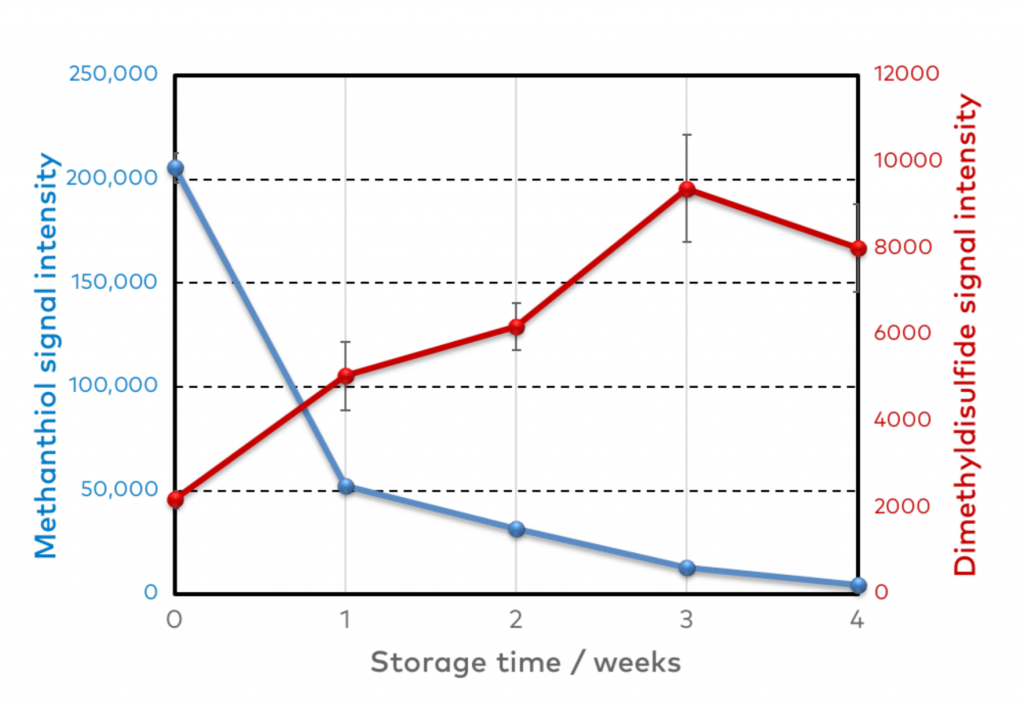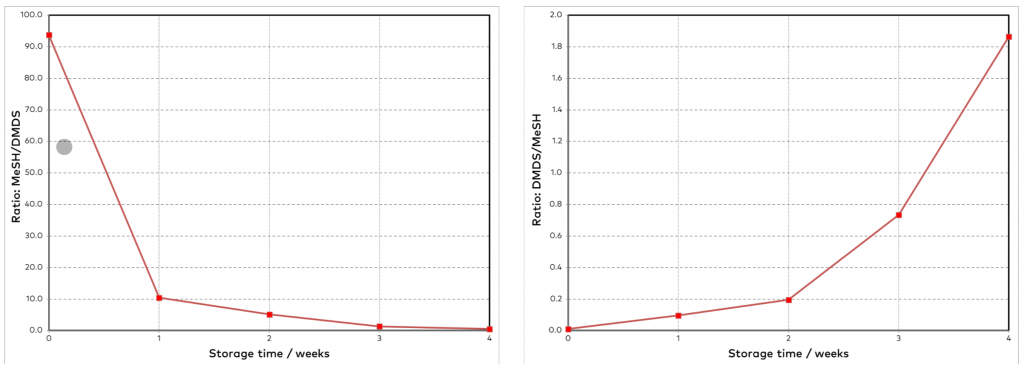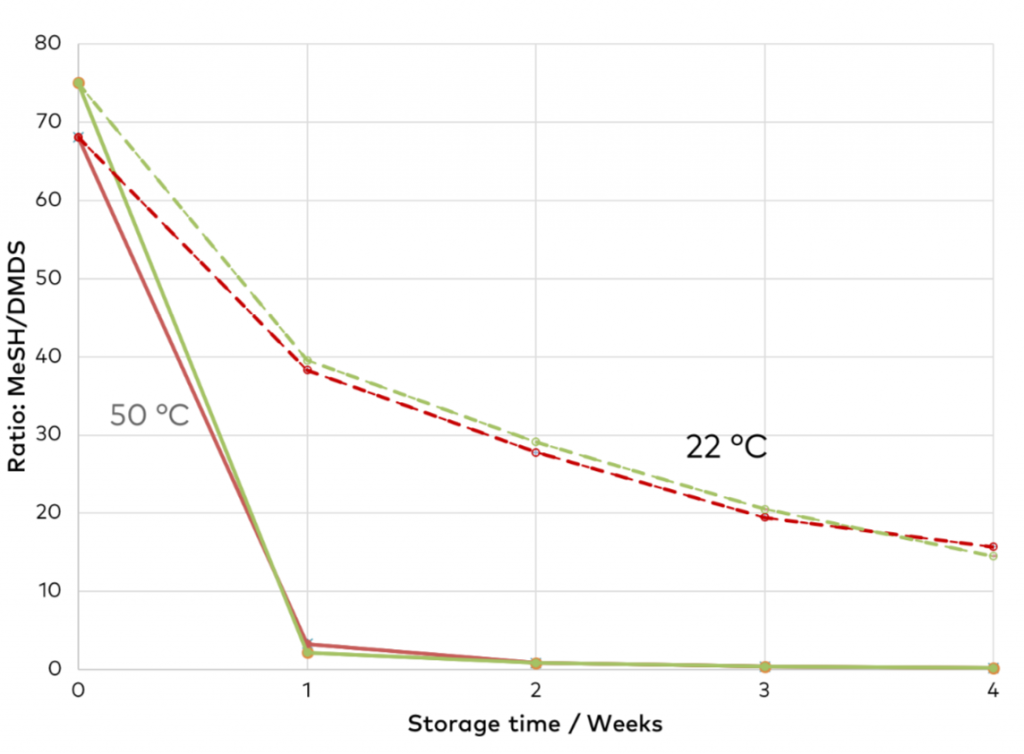Introduction
As a coffee lover there’s nothing worse than a stale cup of coffee. It’s important to understand that the way you store your coffee can greatly affect its freshness. This piece delves into the aspects of coffee staling. Highlights the significant influence of storage temperature on preserving that delicious flavor. By referencing insights from the Specialty Coffee Association’s Coffee Freshness Handbook and various scientific references we will explore the secrets to keeping your coffee tasting fresh.
Understanding Coffee Staling
Staling in coffee is a process that includes chemical and physical transformations that affect the taste of your favorite brew as time passes. Important factors that contribute to staling are oxygen, moisture and temperature. The Coffee Freshness Handbook explains that staling mainly occurs as volatile compounds are lost and off flavors develop through oxidation and other chemical changes. (Smrke et al., 2018).
Picture yourself carefully roasting your coffee beans until they reach the level of perfection only to witness their quality deteriorate over time while sitting on the store shelf. This deterioration accelerates when coffee comes into contact with oxygen and moisture as these elements can easily infiltrate the composition of coffee and initiate chemical reactions (Smrke et al., 2018).
Throughout history coffee experts have long been interested in grasping the aging process. In the middle of the century scientists delved into the effects of storage conditions on coffee quality. As time has passed we now possess methods to examine these transformations all thanks to the advancements in modern analytical instruments (Clarke & Macrae, 1988; Illy & Viani, 2005).
The Science Behind Temperature and Coffee
Temperature plays a role in the deterioration of coffee quality. When temperatures rise chemical reactions that trigger deterioration occur faster following the principles of the Arrhenius equation, which states that reaction rates increase with temperature (Arrhenius, 1889). Essentially every 10 °C increase in temperature can halve the lifespan of coffee. Smrke et al. (2018) have confirmed that higher temperatures accelerate the breakdown of freshness indicators in coffee.
The process of staling involves lipid oxidation resulting in rancid flavors and the degradation of compounds reducing the desirable flavors and aromas of coffee (Kleinwächter & Selmar 2010). According to Smrke et al. (2018) these reactions are impacted by temperature levels; higher storage temperatures lead to a decline in coffee quality.
Freezing on the hand has been proven to decrease these reactions. According to research conducted by the Coffee Excellence Center storing coffee in a refrigerator or freezer can greatly slow down chemical transformations and the release of gases ultimately preserving the freshness of coffee for a period (Smrke et al., 2018). The process of freezing hinders motion leading to decreased oxidation and less evaporation of substances (Clarke & Macrae, 1988).
Freshness Index Explained
To determine the freshness of your coffee scientists rely on a “freshness index.” This index involves tracking chemical markers that degrade as coffee loses its freshness. The Coffee Freshness Handbook mentions markers, like methanethiol, which diminishes quickly after roasting and dimethyl disulfide, which can increase as the coffee becomes stale (Smrke et al., 2018).

over a four-week time period: One kilogram batches of washed Ethiopian Limu, Grade 2, Arabica were roasted
in a Probatino to a roast degree 80 Pt (Colorette value), corresponding to a darker roast degree. 65 g of
roasted whole-beans were packaged immediately after cooling and stored at room temperature (22 °C) under
inert atmosphere in tight packaging with an aluminum barrier but without an off-gassing valve. The two
individual compounds dimethyl disulfide (DMDS) and methanethiol (MeSH) are shown above. We can see that
methanethiol rapidly decreases over the four week time period of storage, whereas dimethyl disulfide increases
up to three weeks in storage. At time zero, and during each subsequent week, the headspace intensities MeSH
and DMDS in five different bags was determined by GC-MS. The results are plotted as an average with the
standard deviation of five replicates (Smrke et al., 2018).
Think of the freshness index as a comparison like the ratio of methanethiol to dimethyl disulfide (MeSH/DMDS). As coffee ages methanethiol levels decrease while dimethyl disulfide levels increase leading to a MeSH/DMDS ratio. Monitoring these ratios provides us with an indicator of freshness that can help in determining storage methods and ensuring quality control (Smrke et al., 2018).

(b) shows the ratio of MeSH/DMDS while the left frame (a) shows the inverse ratio of DMDS/MeSH. As we
can see, figure 3a shows a ratio that decreases with decreasing freshness and is particularly sensitive to change
(loss of freshness) in the first week of storage. Figure 3b is slightly more suited to represent loss of freshness
over a longer storage time period (Smrke et al., 2018).
Comparative Analysis: Room Temperature vs. Refrigeration vs. Freezing
Let’s break down how different storage temperatures impact coffee staling:
Room Temperature: In room conditions ( 20 25°C) coffee loses its freshness rapidly because of the increased chemical reactions and release of gases. When stored at room temperature there can be loss of compounds in just a few weeks resulting in a visible decrease in the quality of the coffee (Smrke et al., 2018).
Refrigeration: Storing coffee in the refrigerator at around 4 degrees Celsius can help slow down the process of it going stale. Yet be cautious as this might cause condensation problems if the coffee is not sealed well potentially allowing moisture, in and speeding up the staling process. While keeping coffee in the fridge is better than storing it at room temperature freezing it remains an method, for long term preservation (Smrke et al., 2018).
Freezing: Freezing is the most effective way to slow down staling. This method helps maintain the aroma and flavor of the coffee by preventing chemical reactions and preserving compounds. Studies have shown that stored frozen coffee can stay fresh for months or even longer. The stability of coffee is attributed to the decreased activity, at colder temperatures, which helps prevent oxidation and loss of aromatic compounds (Illy & Viani 2005).
Practical Storage Tips
To keep your coffee fresh, here are some practical storage tips:
- Use Airtight Containers: Store coffee in airtight containers to minimize oxygen exposure. Oxygen is a major catalyst for oxidation reactions that lead to staling (Smrke et al., 2018).
- Keep in a Cool, Dry Place: Store coffee in a cool, dry place away from direct sunlight. Light and heat can accelerate the degradation of aromatic compounds and the formation of off-flavors (Illy & Viani, 2005).
- Consider Freezing: For long-term storage, freezing coffee in small, airtight packages can help preserve its freshness. Ensure the coffee is tightly sealed to prevent freezer burn and moisture absorption. Smrke et al. (2018) suggest using vacuum-sealed bags or containers with minimal headspace to maximize freshness retention.
- Avoid Frequent Temperature Fluctuations: Frequent changes in temperature can cause condensation and introduce moisture into the coffee accelerating staling. If freezing coffee, try to minimize the number of times it is taken out and put back into the freezer (Clarke & Macrae, 1988).


Photos: https://thebasicbarista.com/blogs/topics/freezing-coffee-beans-barista-basics
Historical Review: Past and Recent Research
The study of coffee staling and the impact of storage temperature has a rich history. Research conducted in the 1940s first pinpointed the elements for diminishing the freshness of coffee. These initial investigations set the stage for comprehending the chemistry of coffee. How it reacts to different environmental factors (Clarke & Macrae, 1988).
In the following decades, scientists have been using methods to study the chemical alterations that happen in preserved coffee. The development of gas chromatography and mass spectrometry has given researchers the ability to accurately pinpoint and measure the substances that create coffees scent and taste. These improvements, have provided an insight into how temperature influences the durability of these substances (Illy & Viani, 2005).
Recent research has continued to build on this foundation. The Coffee Excellence Center, at Zurich University of Applied Sciences has carried out research projects on the freshness of coffee offering in depth knowledge on the dynamics of reactions and the physical changes that occur in stale coffee. Their research has played a role in creating guidelines, for storing coffee (Smrke et al., 2018).
Case Studies and Expert Opinions
Several case studies highlight the practical implications of storage temperature on coffee freshness. A significant research conducted at the Coffee Excellence Center examined the impact of storing roasted coffee beans at varying temperatures and tracking the degradation of freshness indicators over time. The findings highlighted, a difference between coffee kept at room temperature and those stored in the freezer with the preserving significantly more volatile compounds (Smrke et al., 2018).
Experimental Example 1:
During an experiment roasted whole bean coffee was kept in aluminum laminated bags, with a one way valve at three different temperatures; normal room temperature (22 °C) refrigeration (4 °C) and freezing ( 18 °C). The coffee stored at room temperature experienced a decrease in freshness showing a drop in methanethiol levels, within the initial week. On the hand the coffee stored in the freezer maintained methanethiol levels suggesting a slower deterioration process (Smrke et al., 2018).

Experimental Example 2:
A different research project examined the effects of grinding coffee that had been stored at temperatures for a month. The coffee kept at room temperature showed signs of going stale whereas the refrigerated and frozen batches maintained their aroma and flavor well. Analysis based on perception indicated that the frozen coffee experienced the decline in quality with the refrigerated coffee, following closely behind (Illy & Viani 2005).
Expert opinions from industry professionals further support these findings. When it comes to coffee roasters and baristas stress the significance of storing the products. For example numerous specialty coffee establishments suggest that customers keep their coffee in airtight containers in a spot or even freeze it for extended storage (Illy & Viani 2005).
Conclusion
Proper storage is crucial for maintaining the flavor of coffee. Understanding how temperature affects the freshness of coffee helps enthusiasts keep their brew tasting its best. Whether, its storing in the fridge or freezer keeping coffee at temperatures is a way to prolong its quality and taste.
Although the science behind coffee staling, is intricate one thing is certain; temperature significantly influences how long coffee stays fresh. By following the suggestions provided in this article coffee lovers can savor their drink at its peak for an extended period.
References
- Arrhenius, S. (1889). “On the Reaction Velocity of the Inversion of Cane Sugar by Acids .” Zeitschrift für Physikalische Chemie.
- Clarke, R. J., & Macrae, R. (1988). Coffee: Chemistry. Springer.
- Illy, A., & Viani, R. (2005). Espresso Coffee: The Science of Quality. Academic Press.
- Kleinwächter, M., & Selmar, D. (2010). “Influence of Drying on the Content of Phenolic Compounds and Antioxidant Activity of Caper (Capparis spinosa L.).” Journal of Agricultural and Food Chemistry.
- Smrke, S., Sage, E., Wellinger, M., & Yeretzian, C. (2018). The Coffee Freshness Handbook. Specialty Coffee Association.

Leave a Reply